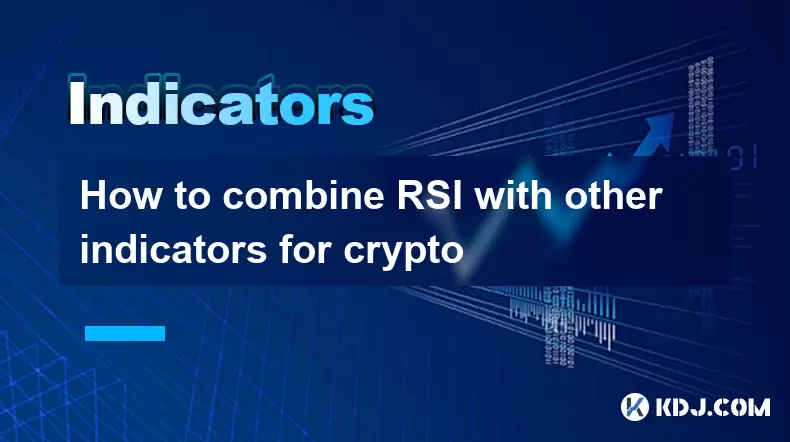-
 Bitcoin
Bitcoin $117,991.5647
-0.03% -
 Ethereum
Ethereum $2,966.4808
0.18% -
 XRP
XRP $2.8076
0.64% -
 Tether USDt
Tether USDt $1.0003
0.00% -
 BNB
BNB $689.9050
-0.63% -
 Solana
Solana $162.0407
-0.80% -
 USDC
USDC $0.9999
0.00% -
 Dogecoin
Dogecoin $0.1995
-1.51% -
 TRON
TRON $0.3001
-1.21% -
 Cardano
Cardano $0.7426
3.25% -
 Hyperliquid
Hyperliquid $47.7978
2.84% -
 Stellar
Stellar $0.4411
16.52% -
 Sui
Sui $3.4267
0.15% -
 Chainlink
Chainlink $15.3148
0.07% -
 Bitcoin Cash
Bitcoin Cash $506.5880
-1.91% -
 Hedera
Hedera $0.2222
12.41% -
 Avalanche
Avalanche $21.2049
1.67% -
 UNUS SED LEO
UNUS SED LEO $9.0606
-0.19% -
 Shiba Inu
Shiba Inu $0.0...01325
-0.86% -
 Toncoin
Toncoin $2.9979
0.32% -
 Litecoin
Litecoin $94.3717
1.13% -
 Polkadot
Polkadot $3.9873
-0.29% -
 Monero
Monero $336.1497
0.92% -
 Dai
Dai $0.9999
-0.01% -
 Uniswap
Uniswap $8.5189
-0.60% -
 Ethena USDe
Ethena USDe $1.0005
-0.04% -
 Pepe
Pepe $0.0...01236
-0.92% -
 Bitget Token
Bitget Token $4.4002
-0.23% -
 Aave
Aave $303.5433
1.05% -
 Bittensor
Bittensor $391.1314
-0.35%
Advanced RSI strategies for crypto
RSI helps crypto traders spot overbought/oversold levels, but in volatile markets, divergence, custom periods, and confirmation tools like moving averages are key for reliable signals.
Jul 13, 2025 at 11:01 am

Understanding the Basics of RSI in Cryptocurrency Trading
The Relative Strength Index (RSI) is a momentum oscillator used to measure the speed and change of price movements. In the context of cryptocurrency trading, RSI helps traders identify overbought or oversold conditions. Typically, an RSI above 70 indicates overbought territory, while below 30 suggests oversold conditions. However, in volatile crypto markets, these levels can be misleading without additional context.
Unlike traditional markets, crypto assets can remain overbought or oversold for extended periods. This makes it essential for traders to understand the broader market structure and not rely solely on standard RSI thresholds.
Using RSI Divergence for Entry and Exit Signals
One of the most powerful tools in advanced RSI analysis is divergence detection. Divergence occurs when the price of a cryptocurrency makes a new high or low, but the RSI does not confirm the move. This often signals a potential reversal.
- Bullish Divergence: When the price makes a lower low but RSI makes a higher low, it suggests weakening bearish momentum.
- Bearish Divergence: When the price makes a higher high but RSI makes a lower high, it indicates weakening bullish momentum.
To apply this effectively:
- Use a higher time frame (HTF) like 4-hour or daily charts to filter out false signals.
- Confirm divergence with volume spikes or candlestick patterns like engulfing candles or dojis.
Customizing RSI Settings for Crypto Volatility
The default RSI setting is 14 periods, but in crypto markets, this may not always provide timely signals. Traders often adjust the RSI period to better suit the asset’s volatility and trading style.
- Short-term traders might use 7 or 10-period RSI for faster signals.
- Swing traders could opt for 21 or 30-period RSI to smooth out noise.
Changing the RSI period alters the sensitivity of the indicator. For example, a 7-period RSI will generate more frequent overbought/oversold alerts but may result in false signals during strong trends. It’s crucial to backtest any RSI configuration against historical data before applying it in live trading.
Combining RSI with Moving Averages for Confirmation
To reduce false signals, many traders combine RSI with moving averages such as the 50-period and 200-period EMA (Exponential Moving Average). These act as dynamic support and resistance levels.
- When RSI shows oversold conditions below 30, and the price is above the 50 EMA, it may signal a strong buying opportunity.
- Conversely, overbought readings above 70, with the price below the 200 EMA, could indicate a high-probability shorting setup.
Using a multi-timeframe approach can enhance this strategy:
- Analyze the trend on the daily chart.
- Use the 4-hour chart for RSI signals.
- Enter on the 1-hour chart after confirming alignment.
RSI Swing Rejection Strategy in Crypto Markets
The RSI swing rejection strategy involves identifying when RSI exits overbought or oversold zones and confirms a reversal. This method is particularly useful in range-bound or consolidating markets.
The steps to execute this strategy are:
- Wait for RSI to move below 30 (oversold) or above 70 (overbought).
- Observe RSI reversing direction and crossing back in the opposite direction.
- Look for candlestick confirmation such as a hammer or shooting star.
- Enter the trade once the RSI closes above 30 or below 70 respectively.
This strategy works best in sideways markets and should be avoided during strong trending moves unless used with trend filters.
Backtesting Advanced RSI Strategies
Before applying any RSI-based strategy in live trading, backtesting is essential. Traders can use platforms like TradingView, Binance Testnet, or Python-based backtesting tools to validate their setups.
Key steps for effective backtesting:
- Define clear entry and exit rules.
- Apply the strategy across multiple crypto pairs and timeframes.
- Evaluate performance metrics like win rate, risk-reward ratio, and drawdowns.
Some traders prefer visual backtesting, where they manually scroll through historical charts and simulate trades. Others use automated scripts to test thousands of scenarios quickly.
Frequently Asked Questions
Q: Can RSI be used effectively in trending crypto markets?
Yes, but with caution. In strong trends, RSI can remain overbought or oversold for long periods. It’s best to use RSI in conjunction with trend-following indicators like moving averages or ADX to avoid premature exits or entries.
Q: How do I avoid false signals when using RSI in crypto trading?
False signals can be reduced by filtering RSI readings with volume indicators, candlestick patterns, or multi-timeframe analysis. Also, customizing RSI periods based on the asset’s volatility can help.
Q: Is it better to use RSI on higher or lower timeframes in crypto?
Higher timeframes like 4-hour or daily charts tend to give more reliable RSI signals. Lower timeframes generate more signals but are prone to noise and false breakouts. A combination of both can provide better clarity.
Q: Can RSI be used for scalping crypto?
Yes, but scalpers often use shorter RSI periods (like 7 or 5) and combine it with other tools like order flow or volume indicators. Scalping requires tight risk management and quick execution, making RSI alone insufficient for reliable setups.
Disclaimer:info@kdj.com
The information provided is not trading advice. kdj.com does not assume any responsibility for any investments made based on the information provided in this article. Cryptocurrencies are highly volatile and it is highly recommended that you invest with caution after thorough research!
If you believe that the content used on this website infringes your copyright, please contact us immediately (info@kdj.com) and we will delete it promptly.
- Crypto, Gold, and Bitcoin: A New York Minute on the Digital Gold Rush
- 2025-07-13 20:30:16
- Crypto iGaming in India: JetTon, LunarBet, and the Evolving Landscape
- 2025-07-13 20:50:16
- XRP Price, Whales, and Payment Tokens: A New Era for Crypto?
- 2025-07-13 20:35:16
- Shiba Inu, Little Pepe, and the $1 Dream: A Meme Coin Showdown
- 2025-07-13 20:50:17
- Snorter Trading Bot: The Meme Coin Presale That's More Than Just Hype
- 2025-07-13 18:30:16
- Unlocking Blockchain Insights: A Deep Dive with Bitquery API for Data Query
- 2025-07-13 18:30:16
Related knowledge

Advanced RSI strategies for crypto
Jul 13,2025 at 11:01am
Understanding the Basics of RSI in Cryptocurrency TradingThe Relative Strength Index (RSI) is a momentum oscillator used to measure the speed and chan...

Crypto RSI for day trading
Jul 12,2025 at 11:14am
Understanding RSI in the Context of Cryptocurrency TradingThe Relative Strength Index (RSI) is a momentum oscillator used to measure the speed and cha...

Crypto RSI for scalping
Jul 12,2025 at 11:00pm
Understanding RSI in the Context of Crypto TradingThe Relative Strength Index (RSI) is a momentum oscillator widely used by traders to measure the spe...

What does an RSI of 70 mean in crypto
Jul 13,2025 at 06:07pm
Understanding the RSI Indicator in Cryptocurrency TradingThe Relative Strength Index (RSI) is a widely used technical analysis tool that helps traders...

How to avoid RSI false signals in crypto
Jul 13,2025 at 06:21pm
Understanding RSI and Its Role in Crypto TradingThe Relative Strength Index (RSI) is a momentum oscillator used to measure the speed and change of pri...

How to combine RSI with other indicators for crypto
Jul 12,2025 at 08:35am
Understanding the Role of RSI in Crypto TradingThe Relative Strength Index (RSI) is a momentum oscillator that measures the speed and change of price ...

Advanced RSI strategies for crypto
Jul 13,2025 at 11:01am
Understanding the Basics of RSI in Cryptocurrency TradingThe Relative Strength Index (RSI) is a momentum oscillator used to measure the speed and chan...

Crypto RSI for day trading
Jul 12,2025 at 11:14am
Understanding RSI in the Context of Cryptocurrency TradingThe Relative Strength Index (RSI) is a momentum oscillator used to measure the speed and cha...

Crypto RSI for scalping
Jul 12,2025 at 11:00pm
Understanding RSI in the Context of Crypto TradingThe Relative Strength Index (RSI) is a momentum oscillator widely used by traders to measure the spe...

What does an RSI of 70 mean in crypto
Jul 13,2025 at 06:07pm
Understanding the RSI Indicator in Cryptocurrency TradingThe Relative Strength Index (RSI) is a widely used technical analysis tool that helps traders...

How to avoid RSI false signals in crypto
Jul 13,2025 at 06:21pm
Understanding RSI and Its Role in Crypto TradingThe Relative Strength Index (RSI) is a momentum oscillator used to measure the speed and change of pri...

How to combine RSI with other indicators for crypto
Jul 12,2025 at 08:35am
Understanding the Role of RSI in Crypto TradingThe Relative Strength Index (RSI) is a momentum oscillator that measures the speed and change of price ...
See all articles

























































































